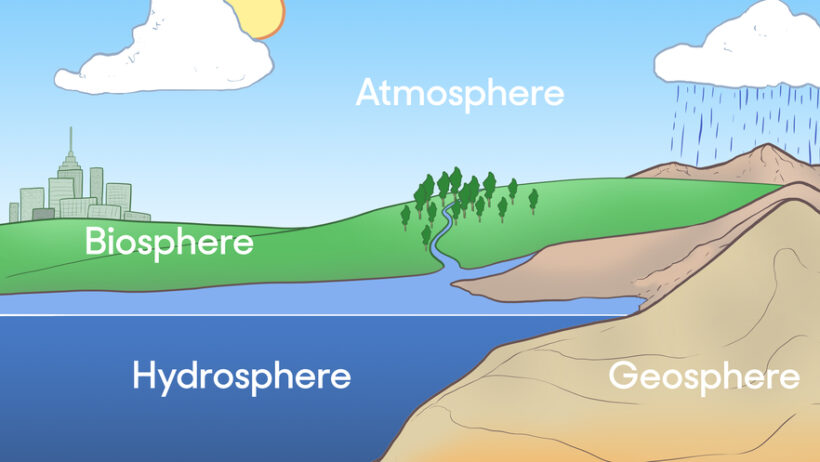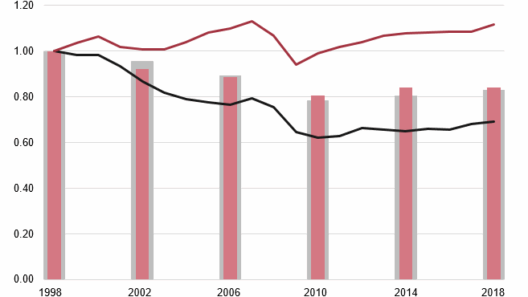Global warming is an insidious specter, gradually infiltrating the delicate balance of Earth’s four spheres—lithosphere, hydrosphere, atmosphere, and biosphere. Each sphere is a distinct realm of our planet, yet they are inextricably intertwined, forming a complex web where every action resonates throughout the entire system. When one sphere falters, the others feel the reverberations, and the consequences can be monumental.
The lithosphere, or Earth’s solid outer shell, encompasses everything from the tallest mountains to the deepest ocean trenches. It is our terrestrial foundation, comprised of rocks, minerals, and soil that host countless microorganisms and plant life. But as the temperatures rise, the lithosphere begins to show signs of distress. Permafrost is thawing, releasing ancient carbon trapped in ice. This phenomenon amplifies climate change, creating a feedback loop that carries profound implications. When the lithosphere crumbles under the weight of global warming, it does not just shift geographies; it shifts our very understanding of what sustains life on Earth.
Transitioning upwards, we encounter the hydrosphere, a vast domain encompassing all of Earth’s water bodies—from the majestic oceans to the tiniest puddles. Water is the lifeblood of our planet, sustaining both nature and human civilization. However, rising global temperatures are wreaking havoc on this essential resource. Ocean temperatures are increasing, leading to coral bleaching, which decimates marine ecosystems. Glaciers, ancient repositories of fresh water, are retreating at alarming rates, jeopardizing the water supply for millions. Even the precipitation patterns are haywire, eliciting floods in some areas while triggering droughts in others. The hydrosphere is no longer a stable environment, and its disarray echoes perilously across the planet.
As we ascend through the layers of our planet’s intricate architecture, we reach the atmosphere—an invisible blanket enveloping Earth like a delicate veil. This sphere is crucial, governing weather patterns, temperature, and the very air we breathe. The atmosphere absorbs greenhouse gases, trapping heat and producing a phenomenon known as the greenhouse effect. With an overabundance of these gases fueled by industrial activities and deforestation, the atmosphere has become an overheated chamber. Extreme weather events are escalating in intensity and frequency—from hurricanes to wildfires—each violent storm a reminder of nature’s rage against the impending changes wrought by human activity. As the atmosphere destabilizes, the very essence of climate is transformed.
Lastly, the biosphere, where life flourishes in myriad forms, struggles against the tumultuous changes occurring within the other spheres. As habitats degrade and migrate due to shifting climates, many species face extinction. The interconnectedness of ecosystems means that the loss of one species can trigger a cascade of failures across entire habitats. Our reliance on biodiversity for food security, medicine, and clean air is now under siege, highlighting the dire need to preserve these living libraries. The biosphere is not just a collection of organisms; it is the intricate quilt of life that sustains our existence. As Earth’s temperatures climb, we witness a tragic unfolding of extinction and loss, mottling this vibrant tapestry with threads of despair.
The interplay among these four spheres creates a persistent dialogue, one where human actions reverberate throughout the entire system. The rise in global temperatures does not merely affect one sphere in isolation; it is akin to pulling a thread from a fabric, causing the entire weave to unravel. Understanding the significance of this interconnectedness is paramount in framing our responses to global warming.
Dealing with such an intricate challenge requires more than the desire for change; it necessitates the integration of science, policy, and communal action. The solutions must be as multifaceted as the problems. Mitigating climate change involves transitioning to renewable energy sources, reforesting areas that have succumbed to deforestation, and investing in educational initiatives that raise awareness about our collective responsibility. Each action, no matter how small, has the power to create ripples that extend far beyond an individual’s immediate environment.
Moreover, embracing sustainable practices fosters resilience—a crucial trait as the planet endures increasing climate stresses. Reducing waste, practicing conservation, and supporting local agriculture are not merely trendy movements; they are essential behaviors that affect the lithosphere, hydrosphere, atmosphere, and biosphere. Our choices shape these spheres and, as a consequence, determine the fate of our planet.
Indeed, the struggle against global warming must challenge our perceptions and compel us to envision alternate futures. We must develop a symbiotic relationship with Earth, recognizing that we are not separate from nature’s rhythms but part of a larger, interconnected existence. Just as the four spheres harmonize to sustain life, so must our strategies coordinate across disciplines—science, policy, economics, and community activism—to combat the looming specter of climate change.
In contemplating the future, the question remains: will we heed the warnings echoed from the lithosphere, hydrosphere, atmosphere, and biosphere? The collective consciousness of humanity is at a crossroads. The actions we take today will define the world of tomorrow. As stewards of this planet, it is our responsibility to act with urgent resolve, ensuring that Earth’s four spheres continue to support life in all its splendid diversity—a tapestry not just preserved but enriched for generations to come.







